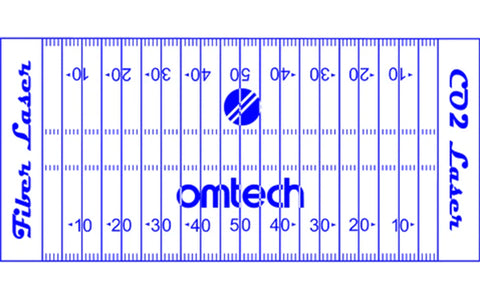The Most Innovative Laser Engraving Materials of 2024
In today's manufacturing and art sectors, laser engraving technology has become an indispensable tool. It has transformed traditional processing methods with its high precision, speed, and flexibility. This article will delve into the most innovative laser engraving materials of 2024, which have not only revolutionized industrial production but also opened up new possibilities for artistic creation.
Basic Concepts and Development of Laser Engraving Materials
Laser engraving materials refer to those that can have their surface morphology or color altered by exposure to a laser beam. Since the advent of laser technology, these materials have evolved from single metals and plastics to a variety of composite materials. As technology advances, the market's demand for precision in laser engraving and diversity in materials has driven continuous innovation and development of these materials.
Introduction to Innovative Laser Engraving Materials
i. Laser Engraving Materials with Better Environmental Sustainability
With increasing environmental awareness, the environmental impact of laser engraving materials has become a focus of research and development. In 2024, we witnessed the rise of a new type of eco-friendly material that not only meets the technical requirements of laser engraving but also minimizes the environmental burden during production and processing. Typically made from biodegradable plastics, reclaimed wood, or other sustainable resources, these materials perform excellently during laser engraving and can be biodegraded or recycled after use, significantly reducing waste and pollution. The development of such materials reflects technological progress and aligns with the global trend towards sustainable development.

ii. Laser Engraving Materials for Finer Engraving Effects
As technology develops, the demand for finer details in laser engraving has led to the development of materials that can achieve such effects. A new type of nanocomposite material can achieve extremely high precision and detail under laser action. The particle size and distribution of this material are carefully designed to ensure that the laser can precisely alter the material's surface, resulting in delicate patterns and text. The application of this material enables laser engraving technology to be used in precision industries, art production, and high-end product customization, meeting the market's demand for high-quality engraving effects.

iii. Laser Engraving Materials with a Broader Range of Applications
Traditionally, laser engraving materials were limited to specific types, such as metals, wood, and certain plastics. However, recent research and technological advancements have enabled laser engraving to be applied to a broader range of material types. For example, a new type of multi-layer composite material combines the advantages of different materials and can withstand high-power laser engraving as well as be suitable for fine, low-power engraving. The emergence of such materials not only provides designers with more choices but also opens up new areas for the application of laser engraving technology, such as the manufacturing of high-precision components in the automotive, aerospace, and medical equipment industries.

The Process of Combining OMTech Laser Engraving with Laser Engraving Materials
Step 1: Material Selection and Preparation
Users first select the appropriate laser engraving material based on the requirements of the engraving project. For projects requiring delicate patterns, a high-polymer composite material might be chosen. Once the material is selected, users must pre-treat it, such as cleaning the surface, to ensure no impurities interfere with the engraving process.
Step 2: Design and Editing
Create or import the engraving pattern using professional design software. Then, adjust the pattern size and resolution according to the specifications of the OMTech laser engraving machine to ensure compatibility with the machine's working range.
Step 3: Setting Laser Parameters
Set the laser parameters in the control software of the OMTech laser engraving machine, including power, speed, frequency, and focus. These parameters need to be adjusted based on the characteristics of the selected material and the desired engraving effect. For new materials, some experimentation may be necessary to find the best parameter settings.
Step 4: Positioning and Fixing
Place the material flat on the worktable of the engraving machine. Secure the material with clamps or tape to ensure it does not move during the engraving process.
Step 5: Testing and Adjusting
Before the official engraving, conduct a small-scale test to check the position of the pattern and the effect of the laser parameters. Adjust the pattern position or laser parameters based on the test results.
Step 6: Official Engraving
Once all settings are confirmed to be correct, start the official laser engraving process. Monitor the engraving to ensure the material responds normally and there is no unexpected burning or smoke.
Step 7: Post-processing and Inspection
After engraving is complete, turn off the laser engraving machine and allow it to cool down. Then, remove the material and perform necessary post-processing, such as cleaning the engraving residue and smoothing edges. Finally, check the quality of the engraving to ensure the pattern is precise and accurate.
Step 8: Evaluation and Optimization
Evaluate the entire process based on the completed engraving project. If the results are not satisfactory, analyze the possible reasons, such as improper laser parameters, inappropriate material selection, or errors in the design file. Adjust based on the evaluation to optimize future engraving results.
Through these steps, the combined use of OMTech laser engraving machines and laser engraving materials can achieve high-quality engraving effects, while improving production efficiency and material utilization.
Conclusion
With the continuous advancement of laser engraving technology, the innovative development of laser engraving materials has brought revolutionary changes to various industries. It has not only increased production efficiency but also driven the rise of personalized and customized products. In the future, we look forward to the emergence of more laser engraving materials with environmental sustainability, finer engraving effects, and broader application ranges to meet the growing market demand.
Related Articles






































